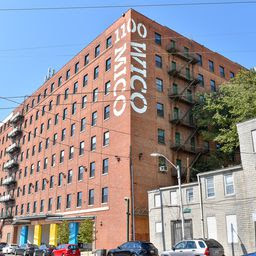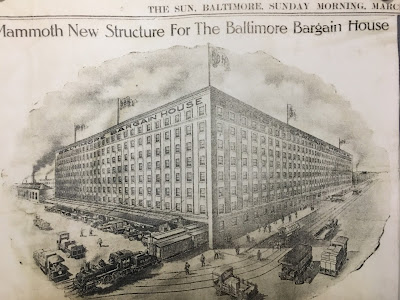Users of Baltimore's single subway line know about "gauge face angles". Tracks being out of compliance in 2018 forced the 15.5 mile line with its 100 subway cars out of service until the tracks were repaired. Ridership plunged. But in the big picture of the Baltimore Metro area the shut down of transit for 18,500 riders does not make a big splash.
 |
| The interior of the 7000 series of WMATA's subway trains (Photo: Philipsen) |
DC Metro riders now had to learn about wheel gauges. Problems with Metro are quite different in Washington where WMATA operates 1,318 subway cars on 117 miles with 626,000 riders a day. When this system takes 60% of its railcars out of service, the effects have a huge impact on the entire region. There is no bus bridge, no Uber Service and no bikeshare that can pick up the lost capacity and the resulting gaps in schedule where now headways may have gone from 4-8 minutes to 30 minutes. Only the fact that COVID continues to take a toll on Metro's ridership has saved DC from a total collapse. Nevertheless, the impact on people relying on the trains is significant, especially since the disruption appears to drag on after the October 17 derailment followed by the order of the Metrorail Safety Commission to remove the cars from service.
IT IS HEREBY ORDERED that WMATA will:• (1) Remove from revenue service all 7000 Series railcars by 5:00 a.m. Monday October 18, 2021; and• (2) Develop a plan, under the oversight of the WMSC, to assess the cause, and to provide for the detection and prevention of wheel gauge anomalies in 7000 Series railcars; and • (3) Implement a plan that provides for the safe return to revenue service of each 7000 Series railcar.
What happened in DC has to do with wheel gauge (the distance between the inner wheel flanges on an axle) which obviously needs to be closely fitting the track gauge or the wheels can jump the rail, what is what happened on October 17.
Surprisingly, the culprit wasn't an old rail car but the new Kawasaki 7000 series which was gradually replacing the 1980's 5000 series coaches since 2015. Kawasaki Heavy Industries supplied 748 7000-series cars between 2010 and 2019, replacing the old 1000- and 4000-series trains. Until the recent mishap, WMATA considered those new coaches as the most reliable in Metro’s history.
However, they do not hold their gauge accurately, instead the wheels appear to move outward on the axle over time, a defect that WMATA had detected during routine inspections since 2017, two years after the new cars went into service. There is now discussion, why these findings did not result in broader preventive action. The exact causes for the wheel migration and the circumstances of earlier wheel gauge problems are now subject to federal investigations. Wheel gauges not following specifications were found on over 31 additional wheel sets once all 7000 series cars were inspected.
 |
| Kawasaki wheel truck assembly Yonkers, NY (Photo: Ken Stabile) |
Aside from some Spanish trains that can adjust to different track gauges while running in service (I wrote about that here), train car axles and wheels (the entire assembly is also called the truck) are principally a fairly simple affair which looks a lot like it did a century ago. However, with higher speeds and modern safety requirements, the trucks and bogies under the trains have become a more complex arrangement which to maintain requires a lot of precision inspection and occasional adjustment to account for wear, for example through “wheel truing”. The wheel gauge, though, wouldn't normally be considered a wear item. The matter of the non-compliant gauge is under investigation by the National Transportation Safety Board (NTSB). Kawasaki, which manufactured the derailed cars in 2016 in Yonkers NY, is rather tight-lipped about the matter, other than stating that the Kawasaki Group “was offered party status by NTSB and has been participating in the investigation together with WMATA”. In a question and answer piece online, the company states that the WMATA trains have a specific assembly that is not being used on other systems, for example in New York City's metro which also uses Kawasaki cars.
The trucks for the WMATA 7000 series railcars are of unique design for the technical requirements of WMATA, and the identical trucks are not used by
other railway operators in US or Japan. The specifications of the trucks vary depending on the type of railcars. (Kawasaki)
Earlier this year WMATA had placed an initial contract for additional new rail cars made by Hitachi. The 8000 series vehicles could cost up to $2.2 bn, if all contract options are exercised and all old cars would be replaced by this model. It is promising to improve on the design and features of the new fleet of 7000-series cars and be lighter, safer and more energy-efficient than current cars. Like the Kawasaki cars they will have digital screens and real-time information, dynamic maps. They will also feature electrical outlets for charging personal devices, and additional hand-holds for standing passengers.
 |
| On order since March 2021: New Hitachi train 8000. |
No time has been given so far, when the Kawasaki 7000 coaches can go back into service. In the meantime the old fleet based on a 1970's design by the Italian company Breda (now Hitachi) will have to do. These large and comfortable cars are still the general template for design, both, for the 7000 and the 8000 series. Neither feature the now popular accordion style fully connected coaches found in Europe. The Italian designed original cars were part of the DC subway project which was conceived as one of President Johnson's "New Society" projects that gave us the acclaimed DC subway and it’s stations and the Dulles airport.
The wheel gauge debacle sets WMATA back, just when the transit agency had gained back some lost trust from riders after full service outages in 2015, stemming from spectacular electrical failures leading to track and train fires. Maryland contributes heavily to WMATA’s funding.
Klaus Philipsen, FAIA
https://www.railwayage.com/passenger/rapid-transit/wmata-removes-all-7000-series-cars-following-derailment/https://www.washingtonpost.com/transportation/2021/10/19/metro-7000-cars-recovery-pandemic/
https://www.railwayage.com/passenger/rapid-transit/hitachi-rail-wins-wmata-8000-series-contract/













